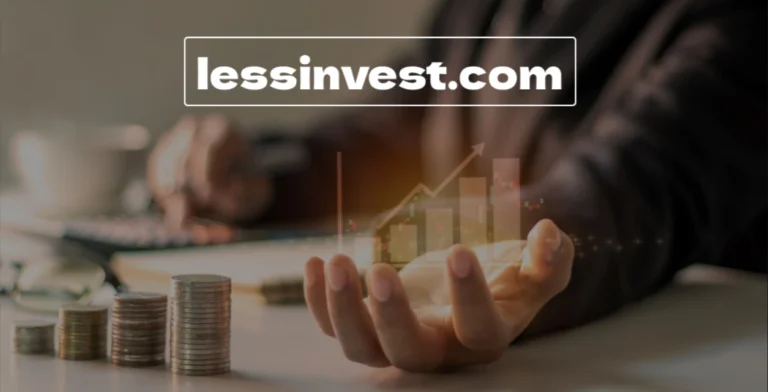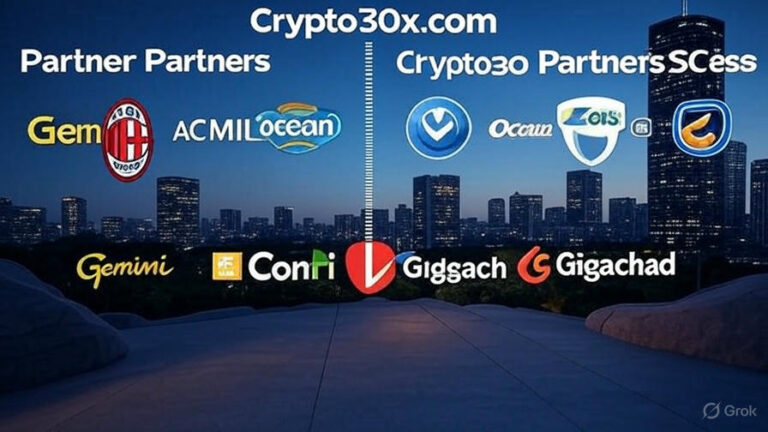Outcome Delivery Incentives – Boost Results & Sustainability Now
What motivates people to deliver exceptional results? Whether it’s hitting a sales target, reducing carbon emissions, or improving patient care, the answer often lies in outcome delivery incentives. These are rewards tied to achieving specific, measurable goals, and they’re transforming how organizations and individuals work. From businesses to environmental programs, outcome delivery incentives align efforts with big-picture priorities like profitability and sustainability.
This article dives deep into what makes these incentives so powerful. We’ll explore their types, how they work, real-world success stories, and potential pitfalls. By the end, you’ll understand why outcome delivery incentives are a game-changer and how to use them effectively. Let’s get started!
What Are Outcome Delivery Incentives?
Defining Outcome Delivery Incentives
Outcome delivery incentives are rewards given for achieving specific, measurable results. Unlike rewards for effort or attendance, they focus on what gets done, not how. For example, a company might offer a bonus for boosting sales by 10%, or a conservation program might pay farmers for reducing water usage. These incentives create accountability and drive results that matter.
The core principle? Clarity. Goals must be specific, measurable, and tied to a reward. This ensures everyone knows what success looks like.
A Brief History and Evolution
Incentives aren’t new. In the early 20th century, factories paid workers for output, like pieces produced per hour. But modern outcome delivery incentives are smarter. Thanks to data analytics, organizations can track complex goals—like carbon reduction or customer satisfaction—with precision.
The rise of sustainability has also shaped these incentives. Governments and nonprofits now use them to tackle climate change, rewarding measurable environmental outcomes. According to a 2023 study by the International Institute for Sustainable Development, outcome-based incentives in conservation programs have grown 25% since 2015. This shift reflects a global push for results-driven solutions.
Types of Outcome Delivery Incentives
Financial Incentives
Money talks. Financial incentives, like bonuses or profit-sharing, are common in business. For instance, a tech startup might offer stock options if a team launches a product by a deadline. These rewards are direct and motivating, especially when tied to clear targets.
A 2024 Harvard Business Review study found that 68% of employees prefer financial rewards for hitting outcome-based goals over other perks. But money alone isn’t enough—context matters.
Non-Financial Incentives
Not every reward needs a dollar sign. Recognition, promotions, or extra vacation days can be just as powerful. For example, a hospital might name a “Nurse of the Quarter” for improving patient satisfaction scores. These incentives boost morale and foster loyalty.
Non-financial rewards also shine in education. Schools often award certificates or scholarships for academic achievements, motivating students without cash.
Environmental and Social Incentives
Sustainability is a growing focus for incentives. Programs like Payments for Ecosystem Services (PES) reward landowners for protecting forests or reducing emissions. A 2022 World Bank report noted that PES programs in Latin America cut deforestation rates by 15% in participating regions.
Social incentives, like public recognition for eco-friendly practices, also work. For instance, cities might highlight businesses that achieve zero-waste goals, boosting their reputation.
Hybrid Incentives
Why choose one type? Hybrid incentives mix financial and non-financial rewards. A company might offer a bonus and a public shout-out for meeting sustainability targets. Governments often use hybrids, like tax breaks paired with certifications for green businesses.
Hybrid models are flexible, appealing to diverse motivations. They’re especially effective in complex projects, like renewable energy initiatives, where multiple stakeholders need buy-in.
How Outcome Delivery Incentives Work
Psychological and Behavioral Mechanisms
Why do incentives work? It’s all about psychology. Behavioral economics shows that people respond to rewards that align with their goals. Outcome delivery incentives tap into both intrinsic motivation (personal satisfaction) and extrinsic motivation (external rewards).
For example, a salesperson might work harder for a bonus (extrinsic) but also feel proud of exceeding targets (intrinsic). A 2023 study in the Journal of Behavioral Economics found that well-designed incentives increase productivity by up to 20% when they balance these motivations.
The Role of Measurable Metrics
Clear metrics are the backbone of outcome delivery incentives. Goals should follow the SMART framework: Specific, Measurable, Achievable, Relevant, and Time-bound. For instance, an energy company might reward a factory for cutting emissions by 5% in six months.
Technology helps here. Digital twins—virtual models of real-world systems—track metrics like energy use or waste in real time. This precision ensures rewards are fair and transparent.
Impact on Team Dynamics
Incentives shape how teams work together. Team-based rewards, like a bonus for a department hitting a target, foster collaboration. Individual rewards, however, can spark competition. Both have their place, but context matters.
A 2024 meta-analysis in Organizational Behavior and Human Decision Processes found that team-directed incentives improve performance 12% more than individual ones in collaborative settings. The key? Align incentives with the desired culture.
Read More About: MyFastBroker Loans – Smarter Borrowing Tips for 2025
Real-World Applications of Outcome Delivery Incentives
Business and Corporate Settings
In business, outcome delivery incentives drive innovation and growth. Take Tesla: its executives receive stock awards tied to market cap and revenue milestones. This focus on outcomes helped Tesla scale rapidly, per a 2024 Bloomberg report.
Small businesses use incentives too. A local retailer might offer staff a bonus for increasing online sales by 15%. These rewards keep teams focused on measurable results.
Environmental Conservation
Conservation programs lean heavily on outcome-based incentives. In Rwanda, PES schemes pay farmers for protecting watersheds, leading to a 10% increase in forest cover since 2018, according to a 2023 UN Environment Programme report.
Incentives also promote sustainable agriculture. Programs in India reward farmers for adopting organic practices, reducing chemical runoff by 20%, per a 2024 study by the International Food Policy Research Institute.
Healthcare and Public Policy
In healthcare, incentives improve patient outcomes. The U.S. Medicare program rewards hospitals for lowering readmission rates, saving $2.8 billion annually, per a 2023 CMS report.
Public policy uses incentives too. The EPA’s cap-and-trade system rewards companies for cutting emissions below their quota. Since 1990, it’s reduced sulfur dioxide emissions by 90%, proving outcome-based incentives can tackle big problems.
Education and Research
In education, incentives motivate students and researchers. Universities offer grants for publishing in top journals, driving innovation. A 2024 study in Nature found that outcome-based funding increased research output by 15% in STEM fields.
Schools use similar tactics. Programs like “Reading Rewards” give students prizes for hitting reading goals, boosting literacy rates.
Challenges and Criticisms of Outcome Delivery Incentives
Risk of Unintended Consequences
Incentives can backfire. When rewards focus too narrowly on outcomes, people might cut corners. For example, a 2023 case study in the Journal of Business Ethics described a company where sales teams inflated numbers to hit bonus targets, damaging trust.
In environmental programs, emissions trading can create “pollution hotspots” where reductions are uneven. Careful design is crucial to avoid these pitfalls.
Equity Concerns
Not everyone benefits equally from incentives. In PES programs, landowners often gain more than marginalized communities, raising fairness issues. A 2024 Oxfam report highlighted this gap in African conservation schemes.
In workplaces, incentives can favor high-performers, leaving others demotivated. Inclusive design—such as tiered rewards—can address this.
Sustainability of Impact
Do incentives create lasting change? Some studies say no. A 2023 review in Environmental Education Research found that short-term rewards for eco-friendly behavior often fade without ongoing support.
To counter this, incentives should pair with education or cultural shifts. For example, companies that combine bonuses with sustainability training see longer-lasting results.
Best Practices for Designing Effective Outcome Delivery Incentives
Aligning Incentives with Goals
Incentives must reflect priorities. A company focused on sustainability might reward teams for reducing waste, not just boosting profits. In 2024, Unilever tied 20% of executive bonuses to environmental goals, cutting emissions by 8%, per their annual report.
Alignment ensures rewards drive the right outcomes, whether it’s profitability or planetary health.
Incorporating Stakeholder Input
Involving stakeholders builds trust. Employees, communities, or beneficiaries should help shape incentives. For example, a 2023 environmental education program in Brazil let farmers co-design PES rewards, increasing participation by 30%.
Listening to stakeholders also uncovers blind spots, like cultural or economic barriers.
Monitoring and Evaluation
Data is king. Use tools like analytics or digital twins to track outcomes in real time. Regular evaluations ensure incentives stay relevant. For instance, a 2024 EU renewable energy program adjusted subsidies based on performance data, improving efficiency by 15%.
Transparency matters too. Share results to maintain trust and accountability.
Balancing Short- and Long-Term Outcomes
Great incentives reward today’s wins while building tomorrow’s success. A green tech firm might offer bonuses for hitting R&D milestones but also fund training for future innovation.
Combining immediate rewards with long-term support—like education or infrastructure—creates sustainable impact.
Outcome delivery incentives are a powerful tool for driving performance and sustainability. From boosting corporate profits to protecting forests, they align motivations with measurable goals. But they’re not perfect. Unintended consequences, equity concerns, and short-term thinking can undermine their impact.
The solution? Thoughtful design. By aligning incentives with priorities, involving stakeholders, and using data to refine them, organizations can unlock their full potential. Whether you’re a business leader, policymaker, or educator, outcome delivery incentives offer a path to meaningful results. Start crafting yours today!







